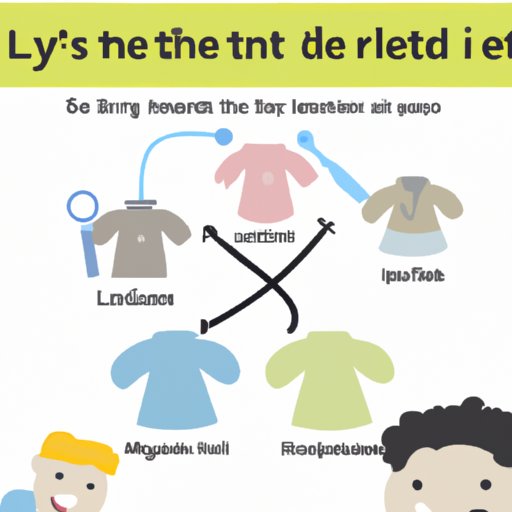Introduction
Lice are tiny parasitic insects that feed on human blood. There are three types of lice: body lice, head lice, and pubic lice. Body lice live in clothing and bedding, while head lice and pubic lice live on the human body. In this article, we will focus specifically on head lice and their ability to survive on clothing.
Examining the Lifecycle of Head Lice and How It Relates to Clothing
The lifecycle of head lice is relatively short, with a lifespan of up to 30 days. During this time, female lice lay eggs (also known as nits) which attach to the base of hair shafts near the scalp. These eggs hatch within 7-10 days, and the newly hatched lice (nymphs) begin to feed on human blood. Nymphs mature into adult lice after another 7-10 days, and the cycle continues.
It is important to note that body lice and head lice are different species, with different lifecycles. Body lice are larger than head lice, and they live in clothing and bedding rather than on the human body. They can survive away from the human body for up to 10 days, whereas head lice can only survive away from the human body for up to 2 days. This means that head lice cannot live on clothing, but they can be transferred from person to person through shared clothing items.

Investigating the Risk of Getting Lice from Clothing
Although head lice can’t survive on clothing for long periods of time, there is still a risk of getting lice from shared clothing items. When an infested person wears a hat, scarf, or other item of clothing, live lice may be transferred onto the fabric. The lice then have up to two days to transfer onto another person who comes into contact with the clothing item.
In order to protect yourself from lice transmitted through clothing, it is important to take extra precautions when wearing secondhand clothing items. While it is possible to get lice from thrift store clothing, it is much less likely if you follow these steps:
- Wash all secondhand clothing before wearing it
- Dry all secondhand clothing on the highest heat setting
- Avoid sharing hats, scarves, and other clothing items with others
It is also important to remember that lice can spread through direct contact, so it is best to avoid close contact with someone who is known to have lice.
How to Effectively Treat Infested Clothing and Prevent Re-Infestation
If you discover that your clothing has been infested with lice, it is important to take immediate action to treat the infestation and prevent it from spreading. Common treatment methods include:
- Washing all infested clothing in hot water (at least 130°F) and drying on high heat
- Using a lice comb to remove any remaining lice from the clothing
- Vacuuming carpets and furniture to remove any lice or nits
- Sealing items such as stuffed animals and pillows in plastic bags for at least two weeks
Once the infestation has been treated, it is important to take steps to prevent re-infestation. This includes regularly checking for lice on family members, vacuuming carpets and furniture regularly, and avoiding sharing clothing and other personal items.
Conclusion
Head lice can survive on clothing for up to two days, making it possible to get lice from shared clothing items. To reduce the risk of getting lice from clothing, it is important to take extra precautions when wearing secondhand clothing items and to avoid close contact with someone who is known to have lice. If you discover that your clothing has been infested with lice, it is important to take immediate action to treat the infestation and prevent it from spreading. Finally, it is important to remember to check for lice regularly, vacuum carpets and furniture regularly, and avoid sharing clothing and other personal items to prevent re-infestation.


